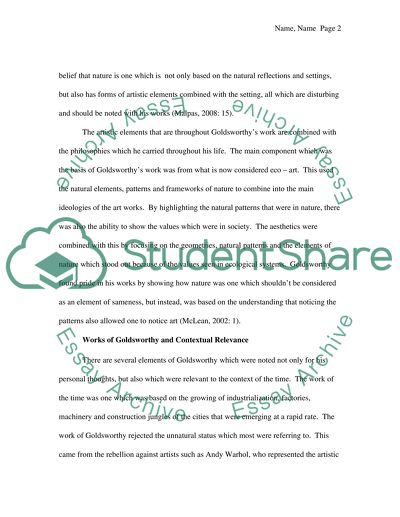Cite this document
(“Art in Context - Andy Goldsworthy Essay Example | Topics and Well Written Essays - 2000 words”, n.d.)
Retrieved from https://studentshare.org/environmental-studies/1418172-art-in-context-andy-goldsworthy
Retrieved from https://studentshare.org/environmental-studies/1418172-art-in-context-andy-goldsworthy
(Art in Context - Andy Goldsworthy Essay Example | Topics and Well Written Essays - 2000 Words)
https://studentshare.org/environmental-studies/1418172-art-in-context-andy-goldsworthy.
https://studentshare.org/environmental-studies/1418172-art-in-context-andy-goldsworthy.
“Art in Context - Andy Goldsworthy Essay Example | Topics and Well Written Essays - 2000 Words”, n.d. https://studentshare.org/environmental-studies/1418172-art-in-context-andy-goldsworthy.


